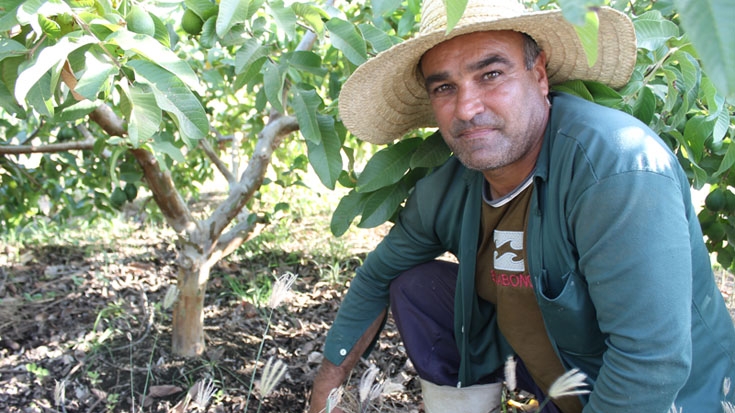In the fictitious world of superheroes they would be called Capitan Seed, Super Water and Super Snow, joined together in the titanic struggle against the planet’s new villain: Climate Change.
In the real world, it would be more appropriate to refer to these characters as “super farmers,” a growing group of Latin American smallholder farmers who are successfully applying advanced technologies and more traditional methods to mitigate the extreme manifestations of climate change – whether they are droughts, storms or loss of natural irrigation sources such as snow peaks.
And they are certainly needed: the livelihoods of some 93 million Latin Americans depend on agriculture. In parts of the Caribbean, the sector employs nearly three-quarters of the rural population.
These flesh-and-blood heroes are located throughout rural Latin America and number in the thousands.
Brazilian Inacio Medeiros harvests thousands of kilos of guava monthly in one of the country’s driest areas. Thousands of smallholder farmers in Haiti plant flood-resistant seeds. In Uruguay, an app was created to monitor climate, soil and water conditions. Bolivians are making more efficient use of water from Andean snows.
All of these initiatives have the same aim: to help agriculture adapt to higher temperatures resulting from climate change.
"The potential for damages to crops because of pests and diseases plus nonlinear temperature effects is likely to grow as the world warms toward 2°C and above,” according to the study Turn Down the Heat: Why a 4°C Warmer World Must be Avoided. This situation will undoubtedly worsen if the planet’s average temperature is even higher.
The idea is not to develop a highly sophisticated agriculture. To the contrary, sometimes it is as simple as returning to tradition. At his farm in Cruzeta (Rio Grande do Norte, Brazil), Medeiros uses only natural fertilizers and pesticides, as well as a drip irrigation system that calculates exactly how much water his crops need. His leafy guava trees produce nearly 4,000 kilos of fruit every month.
Flood-resistant super seeds
It is not always easy for farmers to adapt to the new reality, however.
"Climate change is a long-term problem whereas farmers have immediate needs,” said Diego Arias, an agricultural economist at the World Bank. “It takes time for farmers to reap the economic benefits of adaptation. During this period, their incomes fall, yet they still have to earn a living, to feed their children,” said Arias, who worked in agricultural projects in Haiti for 10 years.
Agriculture represents 25% of GDP and 66% of employment in rural areas of that Caribbean country. To help 3,000 local farmers face this challenge, the World Bank is promoting a project to supply them with super seeds (more resistant to adverse weather conditions), inputs and equipment.
For farmer Denise Chery, this assistance has been crucial: she no longer worries too much about floods and grows crops using environmentally-friendly technologies. “In one year, my yield increased by nearly 30%,” she said.

